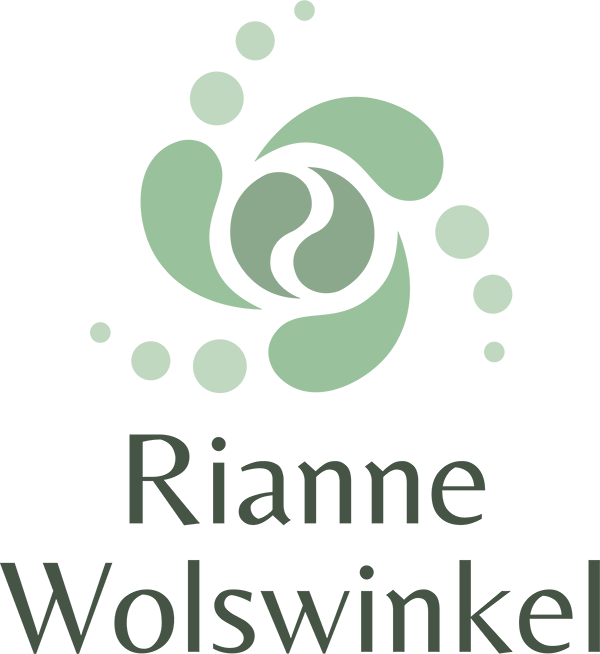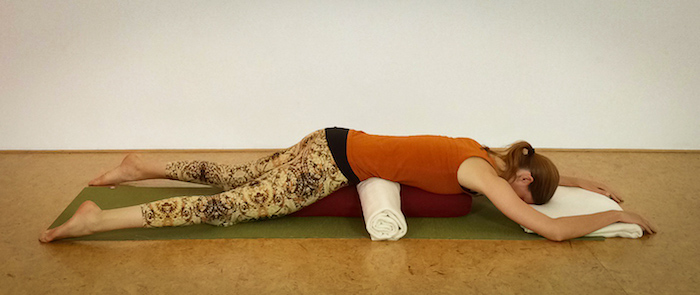How to practice
Sleeping dog:
Place the bolster lengthwise in front of you. Place the folded, small towel at the top end behind the bolster on the floor, this will support your forehead when you lie down. If you want to use the roll under the belly, roll the blanket into a firm roll. Place the roll in the middle of the bolster.
Place yourself face-down on the bolster, knees apart. Your knees should be supported by the ground. If that feels to hard you can place a blanket below your knees and lowerlegs. If the stretch of your foot doesn’t feel comfortable you can roll the end of the blanket, to have a roll below the ankles (not shown in the picture, but I now always have that).
The roll for the belly needs to be just below the navel. Experiment with the thickness (not too thick). Your upperbody, up to the chest and breastbone, is fully supported by the bolster, but the throat is completely free. Your head will gently bend forward and your forehead rests on the small towel. The arms are relaxing forward on the floor, either palms down to relax, or palms up as a gesture of giving and surrender. You can also place your arms alongside your body, but make sure that you place support, like a block, below each shoulder. We don’t want unsupported joints!

